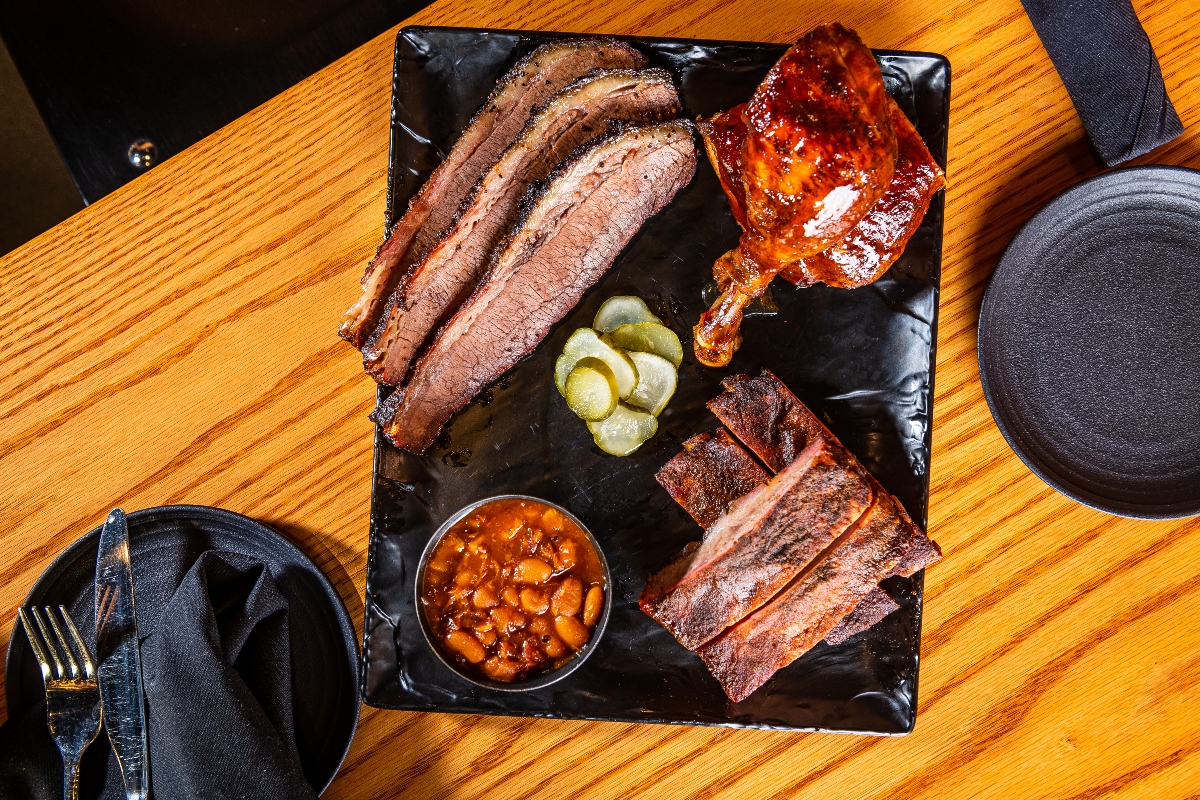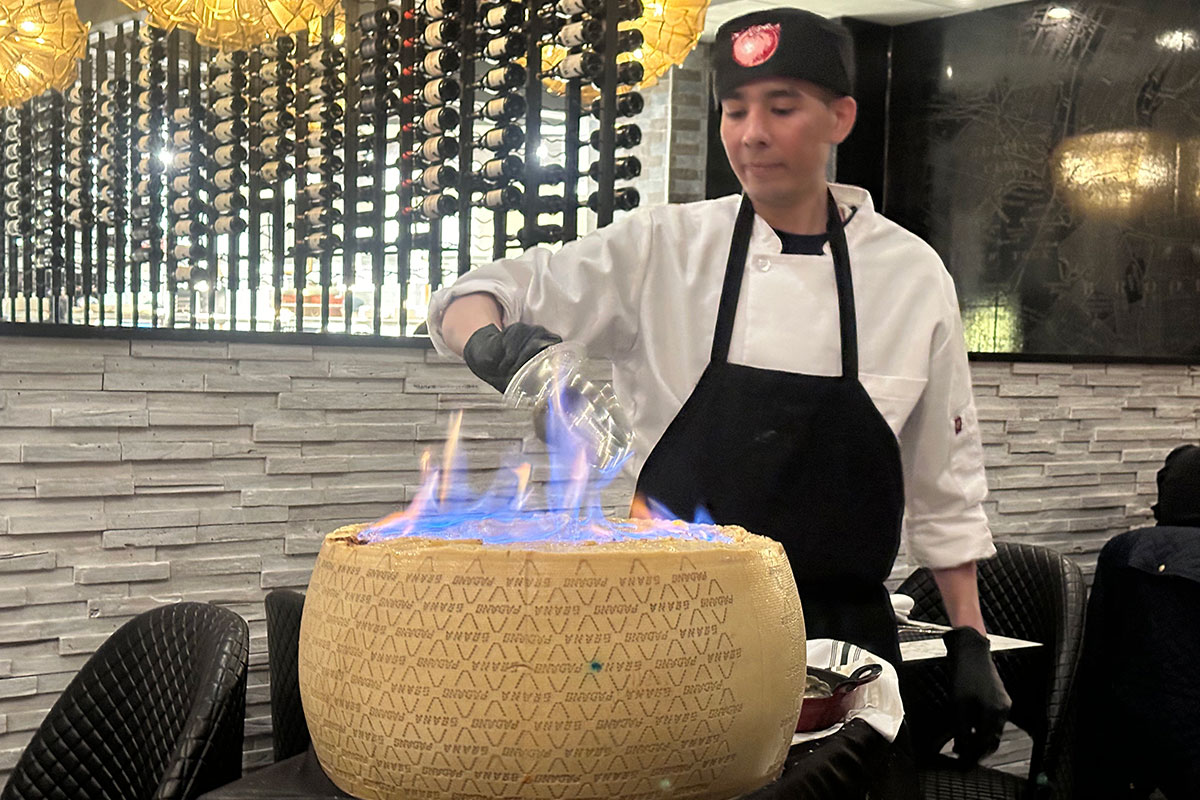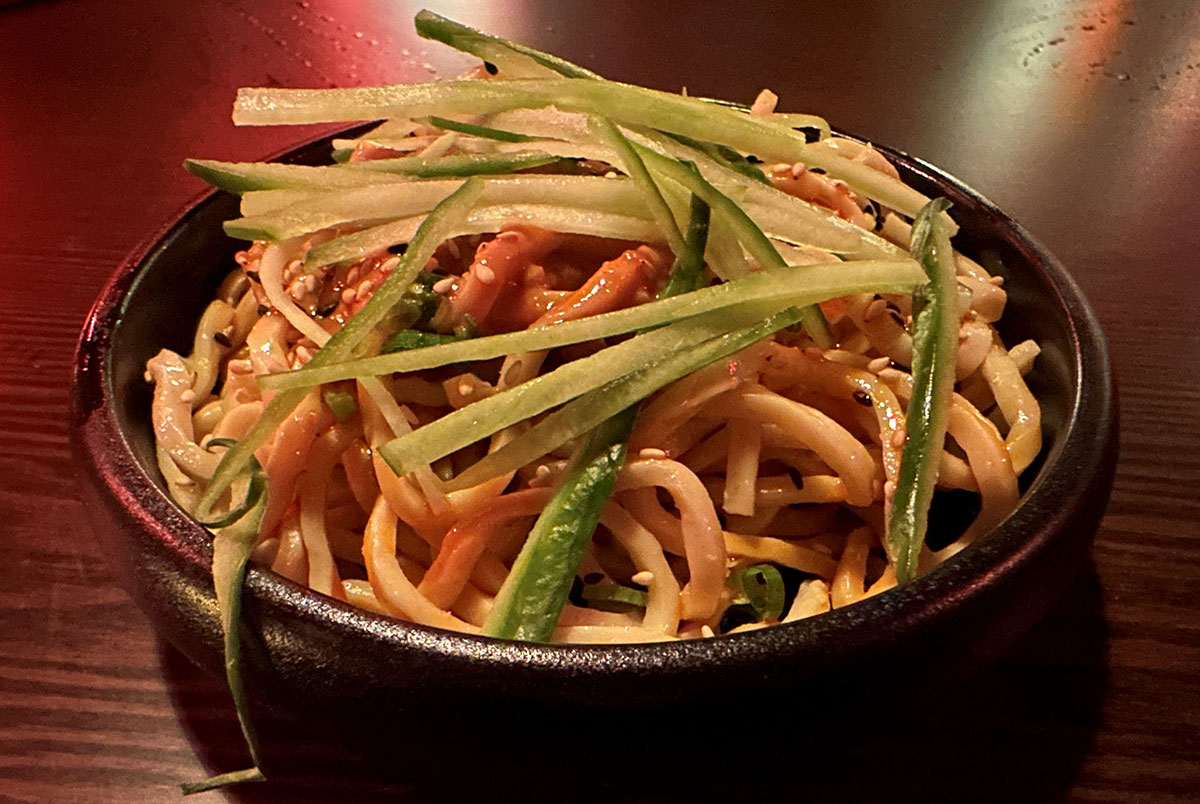Smoke is ethereal. From wisps to clouds, it’s almost as difficult to harness as it is to pin down. When it comes to cooking with it, some experts know how to properly control it; others let it take the lead. Too many barbecue restaurants apply a heavy waft of the stuff in their cooking. While it lets diners know they’re eating smoked food, this is not how it should be.
In barbecue competitions, “Judges don’t want to taste smoke,” says Andrew Darneille, pitmaster and owner of Smokecraft Modern Barbecue in Arlington’s Clarendon neighborhood. “As you begin to excel in barbecue, you realize how little smoke makes a difference in the food.”
His light hand means that though nearly everything at his restaurant is prepared with smoke, it is only a sweet whisper—just enough to add vivid color to the flavor, but not enough to cloud it. “I think we treat wood like salt and pepper,” he says. “You don’t want to overseason something the wrong way.”
And he doesn’t. From salads to desserts, he judiciously applies smoke like a makeup artist brushes on mascara. It is there to enhance, not to be noticed.
The planning for Smokecraft began in 2017. The goal was always to be in young-skewing, active Clarendon, but it wasn’t easy to find a space that would work. Then COVID-19 hit, and construction all but ceased. The restaurant finally opened in August, but with restrictions. “I have a 35-foot bar that I haven’t been able to get a single guest at yet,” Darneille laments.
Takeout is currently propelling the business, sometimes accounting for 65% of sales. This presents a huge operational challenge for the team, Darneille says, because “everyone wants to eat at the same time and try all the same things.”
The last problem is really a pity. The goal of Smokecraft isn’t really to serve the competition-style ’cue that’s proved most popular; it’s to innovate. Darneille wanted to make barbecue friendly to people who typically wouldn’t venture out for a big meaty meal. But customers are focused on basics like the wagyu brisket and pulled pork.
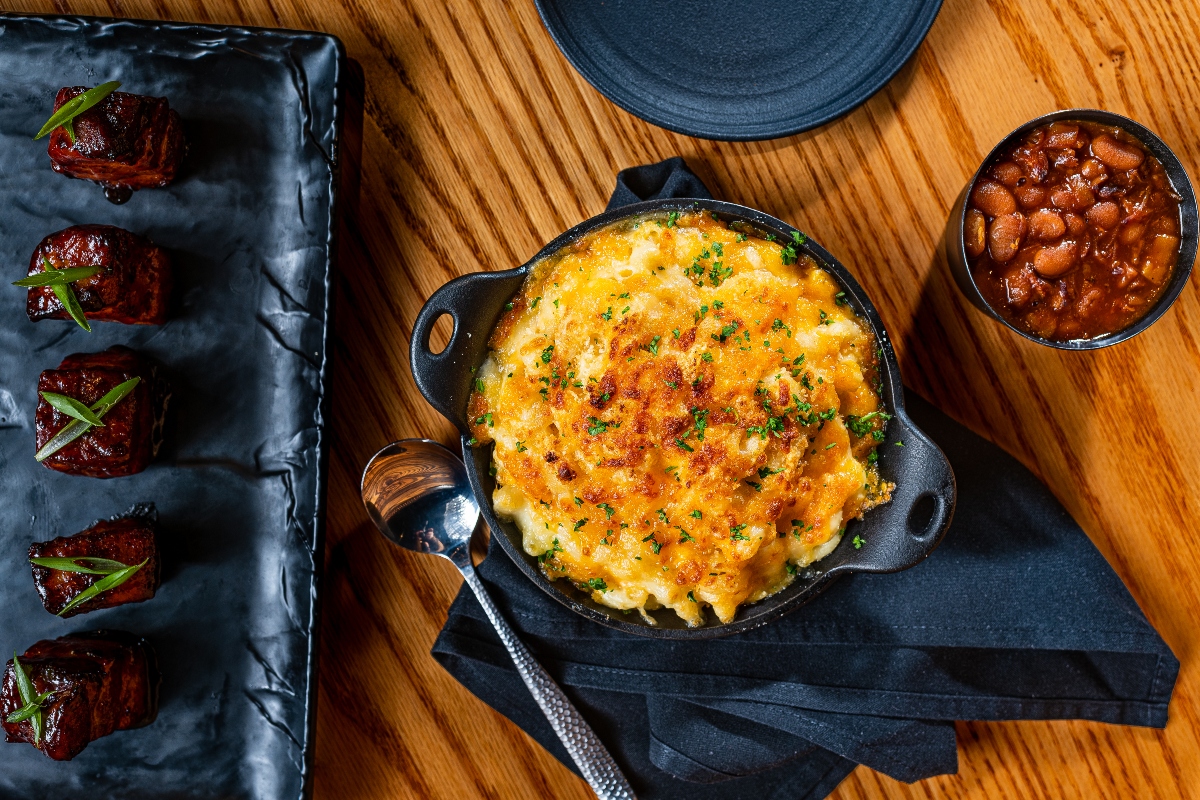
The flesh merits a fan base. The standouts are crusty St. Louis ribs whose meat clings loosely to the bone but adheres until teeth rend it from its place. The meat stands on its own without a sauce, but the moist, fall-apart-tender chicken is brushed with pineapple-bourbon sauce for a hint of sweetness that makes it even more delectable. It’s also worth ordering one of six sauces on the side—the best is a honey-peach vinegar that has earned plaudits in competition.
Smoky sides offer their own rewards. Gooey baked mac and cheese benefits from a blend of five cheeses, including Jack, cheddar, Swiss, mozzarella and “a secret ingredient.” Street corn is off the menu for the winter, but diners should anticipate its return. The grilled pair of ears is spicy with a chile-lime rub and from-scratch chipotle aioli, but sweet and juicy beneath. Crispy Brussels sprouts simply cry for one bite after another.
Diners can experience this with takeout, but there’s no replacement for dining in and being treated to a paper cone filled with chunky little corn muffins with a side of habit-forming whipped peach-honey butter. Chief mixologist Lauren Paylor has created a variety of virgin and boozy cocktails sure to whet your appetite, too. Just be careful to make sure your server is very clear on what you’re ordering. I requested the mocktail “bzlss” Mojito Cabalito and ended up with rum in my strawberry-and-mint-muddled drink sweetened with spiced honey.
The drinks set the scene for the modern barbecue on the menu. Skip the flaccid grilled Caesar to start with some meat candy: Compart Duroc pork belly burnt ends glazed in a lovably sweet apple glaze. Even nachos receive the barbecue treatment, with smoked queso to go with the cheddar and Jack cheeses. Add pulled pork for an oversize portion worthy of a hearty meal.
Entrees include a tri-tip steak that’s smoked then seared. This means it’s prepared somewhere in the range of medium by default—steak fans who like their beef still mooing need not apply—but retains a juicy, tender character with just a lilt of smoke. There’s plenty of fresh chimichurri to top it. At first, it’s refreshing, but red pepper flakes build to make it spicier than perhaps it should be.
The spaghetti squash is aimed at dieters who want to enjoy a wash of smoky flavor while avoiding a heavy meal of meat and carbs. It’s essentially a pasta dish, but with al dente strands of applewood-smoked squash instead. The inclusion of goat cheese wakes up the nest that’s woven with onions, spinach and roasted red peppers.
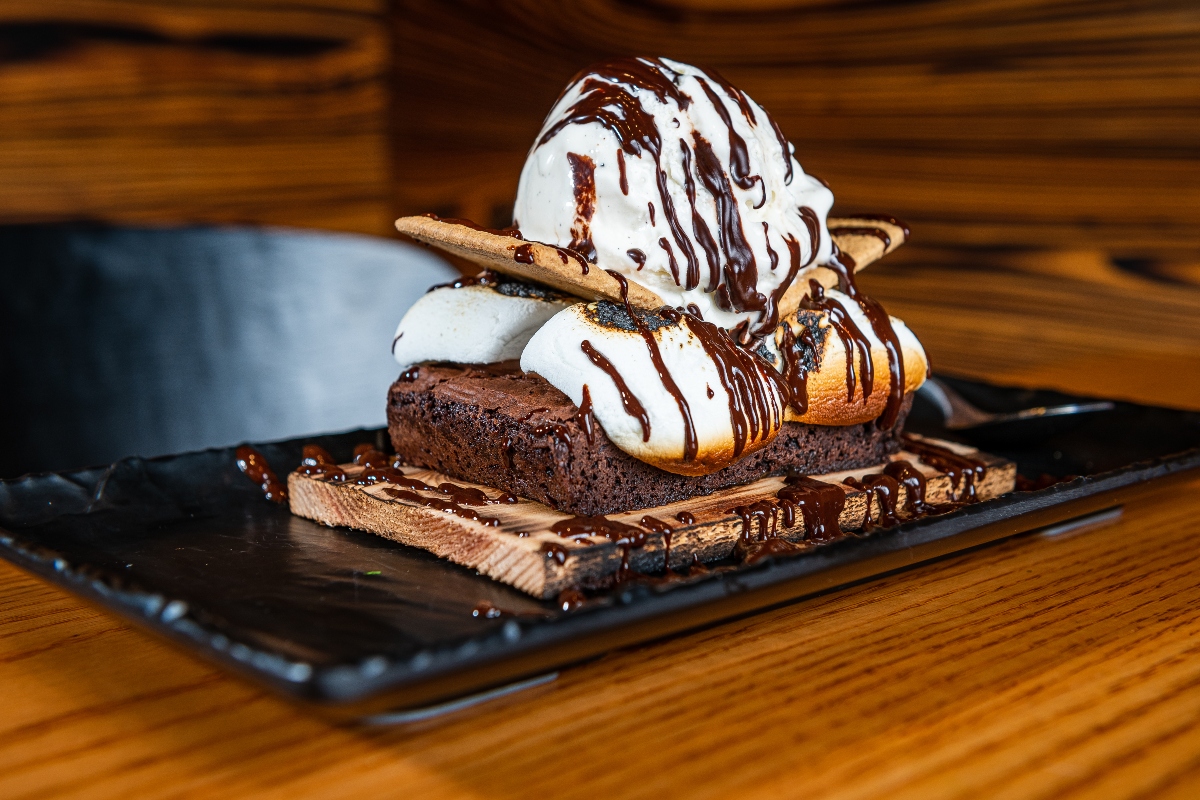
But the kitchen’s greatest smoky successes are desserts, a skill Darneille honed in competition. He perfected the chocolate cherry bread pudding on the barbecue circuit, and it shows. It’s cooked in a pan in the smoker with cherrywood, meaning the whole thing is veiled in smoke, a flavor that accentuates the positive of the semisweet chocolate and port-soaked cherries alike. S’mores smoked on a cedar plank are a winner, too, crowned with fluffy bruleed marshmallows.
Darneille hopes that as coronavirus risk decreases and business begins to return to normal, he’ll be able to add more of his creative flair to the menu. Duck and lamb are among his plans, as is the addition of even more desserts. Once barbecue competition reopens, he also hopes to test his recipes there. There’s no question that some big trophies are coming his way.
See this
There’s a 35-foot bar turning out cocktails, but head toward the restrooms to check out a wall-size display of the many varied woods used to smoke the food.
Eat this
Pork belly burnt ends, St. Louis ribs, chocolate cherry bread pudding
1051 N. Highland St., Arlington
Open daily for dinner; brunch is served on Saturday and Sunday
Appetizers: $11.95-$18.95 Entrees: $12.95-$34.95 Desserts: $7.95
Rating: ★★★★
★ Fair ★★ Good ★★★ Great ★★★★ Excellent ★★★★★ Superior

